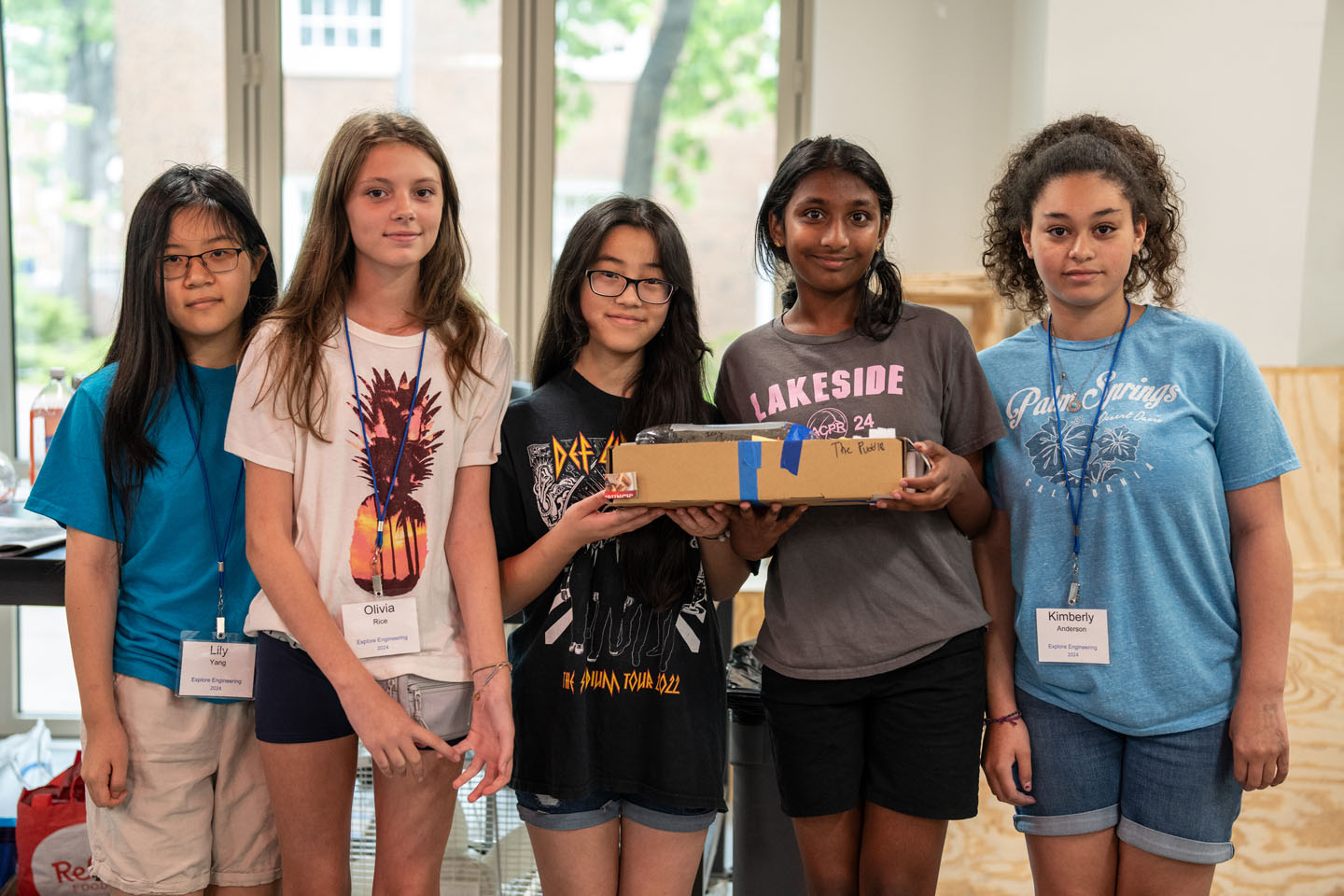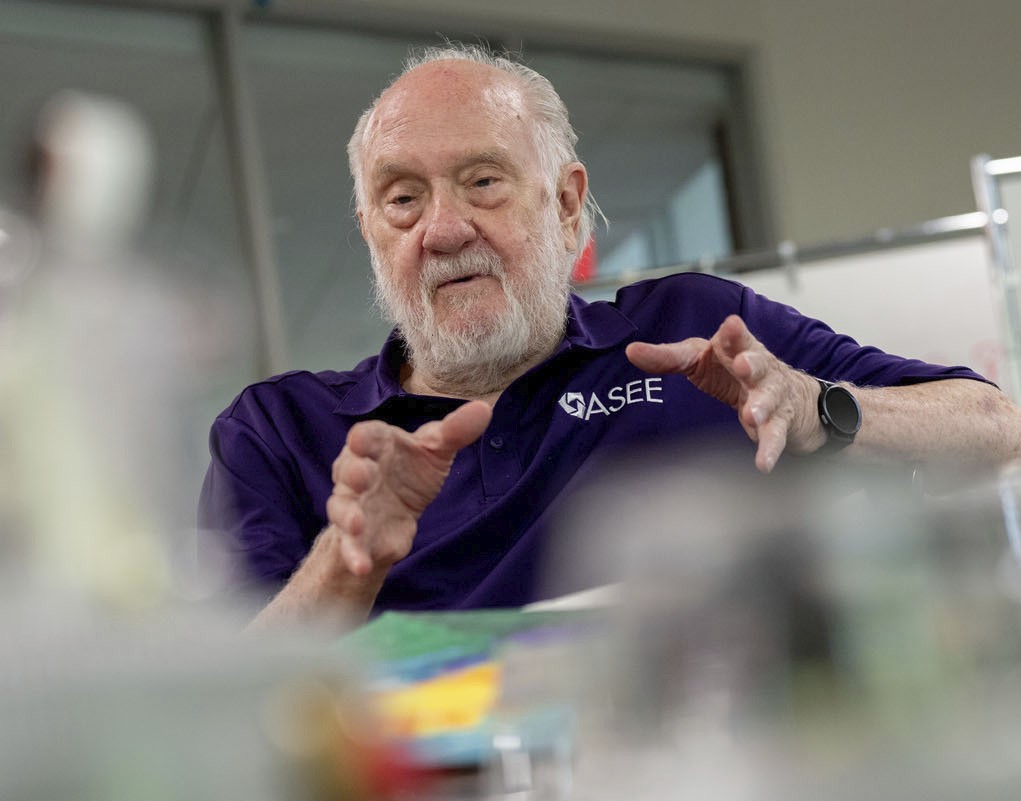
Professor Emeritus Larry G. Richards still brings it. The recyclables and usable trash, that is. It’s collected from around the University of Virginia.
“The first message here is that we’re using trash — stuff that has been discarded,” he said. “We have bins of trash that the kids can use to make their vehicles.”
In fact, the lesson is called “Trash Slider.” But on Thursday of last week at Rice Hall, the precleaned items were neither trash nor recycling. They became transformed into machine components as seven groups of middle-schoolers added the finishing touches to their entries.
The annual week of learning activities is called Explore Engineering, because that’s what the children were doing. Richards, a mechanical and aerospace design instructor who taught college students for more than 50 years, 49 of those at UVA, has been delivering variations on this type of summer STEAM experience to either high schoolers or middle schoolers for about 25 years.
Richards was inducted into the American Society for Engineering Education’s Hall of Fame last fall for his contributions to engineering education. And with the help of his son Russell, a local artist; the SEAS Center for Diversity and Inclusion; and UVA Engineering student groups such as the Society of Women Engineers, he shows no signs of stopping.
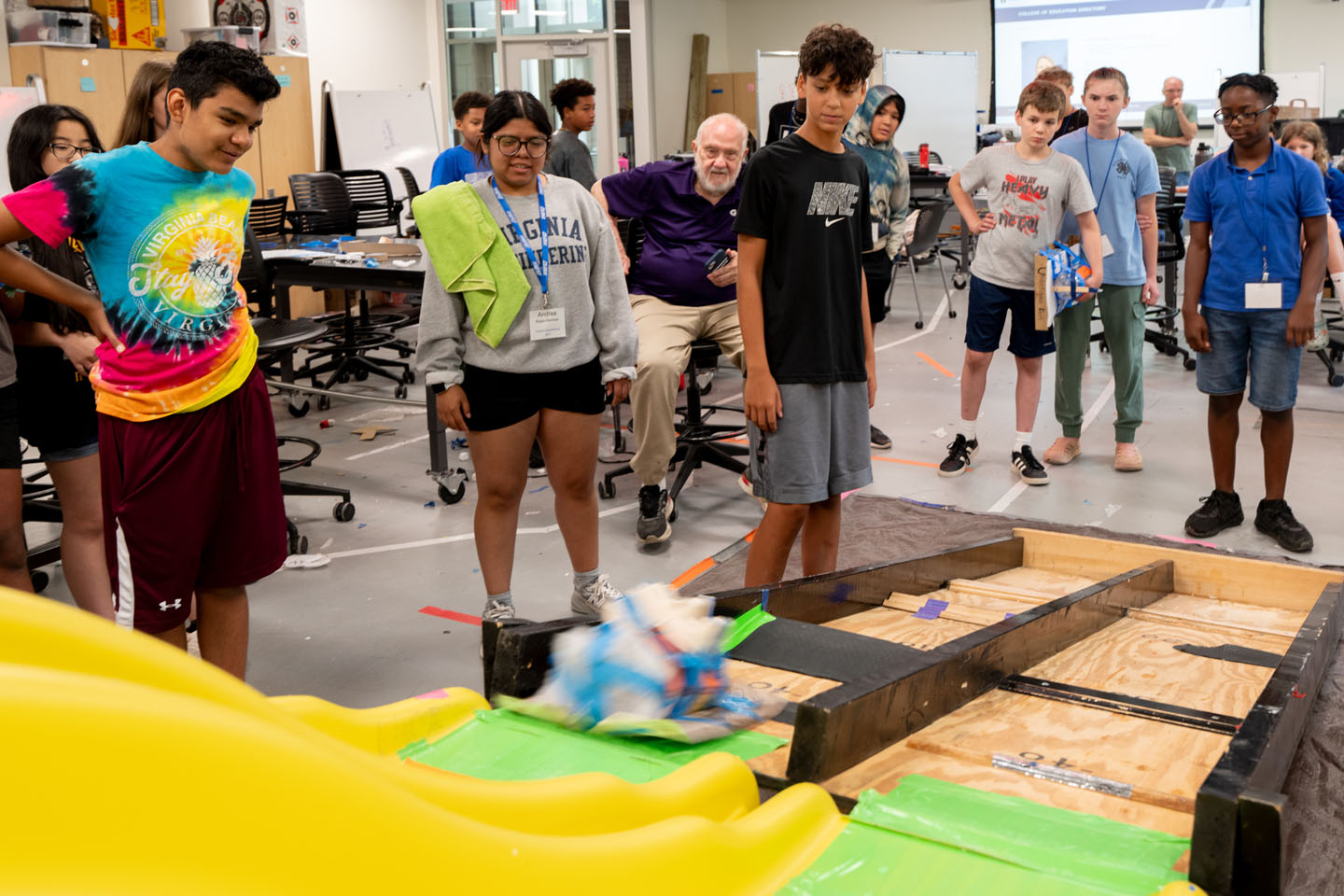
“One thing they're going to learn is that friction requires smooth surfaces to overcome it,” Richards noted on this particular morning. “Also, the obstacles are such that if the front is curved, the vehicle will go over them, and if it's flat, it won't. We also have an issue with center of gravity. When the bottle is filled with water, you don't want it too high on the vehicle or it's going to cause it to tip over.
“At the end of the week, those are the sorts of things we expect them to have learned.”
The Team To Beat — Not That It’s a Competition
When asked if any of the teams had figured out the key concepts for success, event workers noted one group appeared to be designing well. That group of middle schoolers originally started out calling themselves “Santa’s Pain.” They pivoted, deciding that “Underfunded Elves” was easier to say.
The inspiration of Santa’s low, wide sled shape was indeed evident in their final build.
The protype vehicle included: at the bottom of the sleigh, a piece of cardboard curved at the front to better overcome bumps; in the middle of the sleigh, a sheet of packing bubbles with oversize air pockets for shock absorption; and at the top of the sleigh, the required 2-liter soda bottle resting on its side.
They also added a popsicle stick with a smiley face drawn on it to the back of the sleigh. That was simply for pizazz.
The assemblage of castaway items was bound together by blue painter’s tape.
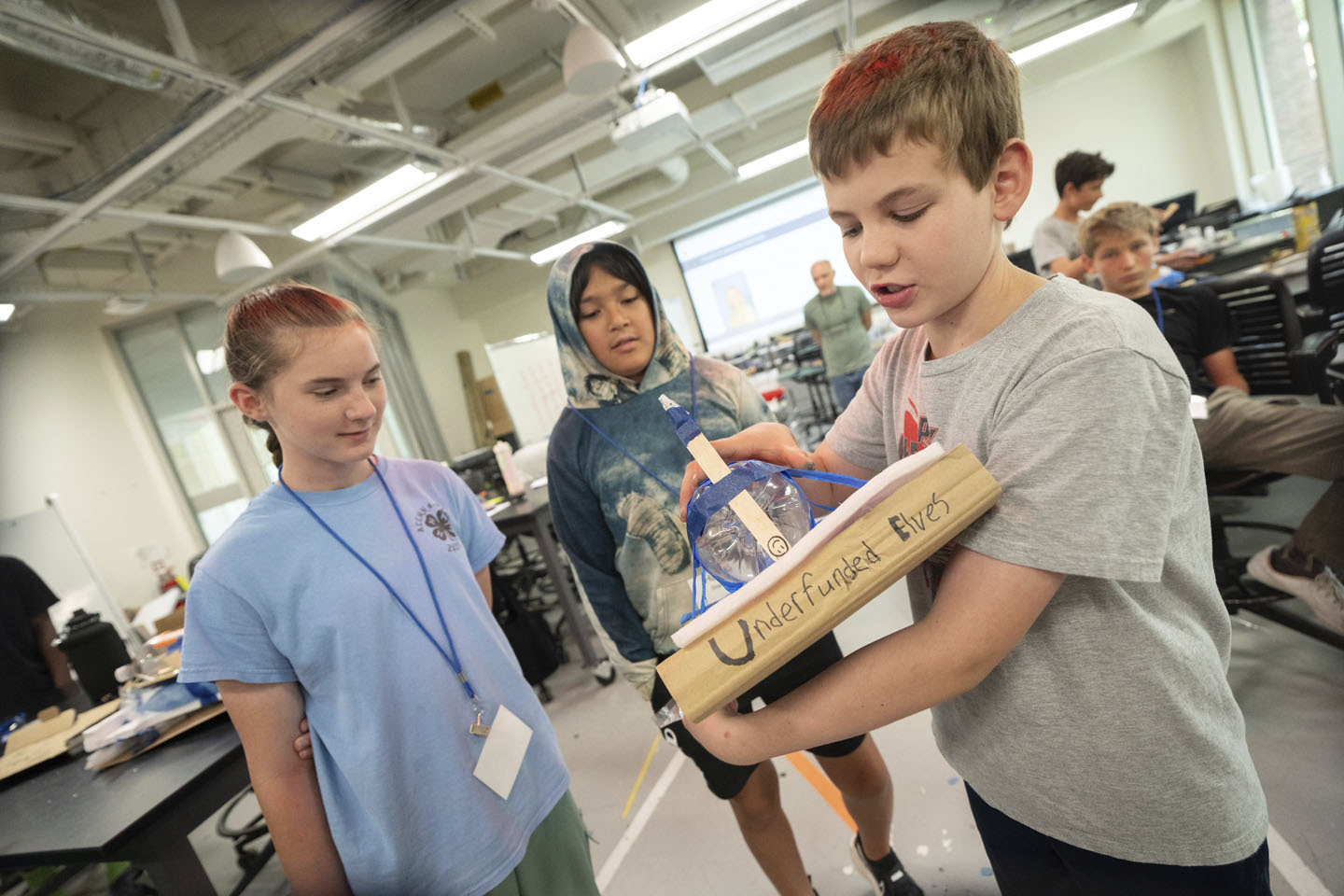
Just about anything could be a useful engineering material, the students learned, if you keep an open mind and an eye for beneficial attributes.
“I found an asthma inhaler back there,” offered one of the “Elves,” William Beaver, a seventh-grader at Henley Middle School in Crozet. But because it was accidentally included in the trash mix, he decided against using it on the sleigh.
Equipment for other classroom unit projects, which are referred to as “engineering teaching kits,” or ETKs, might be more standard engineering parts such a motors, batteries and connectors. The kits themselves, though, are really just a list of instructions for educators. The DIY recipes for learning mean they can be seasoned to individual tastes.
Over time, Richards and his students have created active-learning lessons on catapults, solar cars, buildings and bridges, hovercraft, submarines, even brain surgery.
“We do the brain surgery with Jello,” Richards said. “We discovered if you put flour in it, it'll make the brain opaque so they can't actually see what's in there. They have to find better ways of diagnosing where the tumor is and what shape it is.”
He added, “One year, we looked over and some kid was eating the Jello.”
For the pending trash vehicle "competition," the kids dumped out the golf balls being used to approximate weight through a rectangular opening in the sides of their plastic bottles. The balls would soon be replaced with water. The idea was to keep as much of the wet stuff as possible in the vehicle’s cab — the plastic bottle — when the prototypes zoomed over, or into, obstacles on two inclined tracks.
Notably, it was not a race. Instead of focusing on the winning, the mood should be more about solving the problem through teamwork, the organizers said.

“You try to lower the temperature if they get too competitive,” said Anne Clements, a 2024 UVA biomedical engineering graduate and one of the Society of Women Engineers members who helped facilitate the day’s learning.
Other who helped out this year were Grace Ko, Alexis Blankenship and Andrea Rojas Ramirez.
Addressing a Critical Need
Today, it seems that almost everything marketed to youths is packaged with the words “STEM” or “STEAM” on them. But it wasn’t always the case.
While there were certainly numerous engineering-oriented toys and learning products on the market by the turn of the millennium, Y2K turned out to be nothing like you would have thought if you’d grown up in the 1950s. Children were leaving their science and building “toys” behind after elementary school, and they weren’t picking them back up. As a result of expanded interest in other professional schools and the liberal arts, enrollment in U.S. engineering schools was declining.
The then-new UVA mechanical and aerospace engineering chairman, Pepe Humphries, proposed that Richards take on a project in light of the problem.
We’ve always tried to do things those companies are not doing.
As part of his American Society for Engineering Education Hall of Fame induction, Richards wrote in a personal statement last year that Humphries “knew of [world-renowned science educator] Herb Thier’s work at Berkeley with inquiry-based science teaching kits and suggested we might develop Engineering Teaching Kits (ETKs) to teach precollege students about engineering and attract them to the field.”
Richards’ initial efforts got off the ground with a grant from the Payne Family Foundation. That led to the National Science Foundation grant that created the Virginia Middle School Engineering Education Initiative.
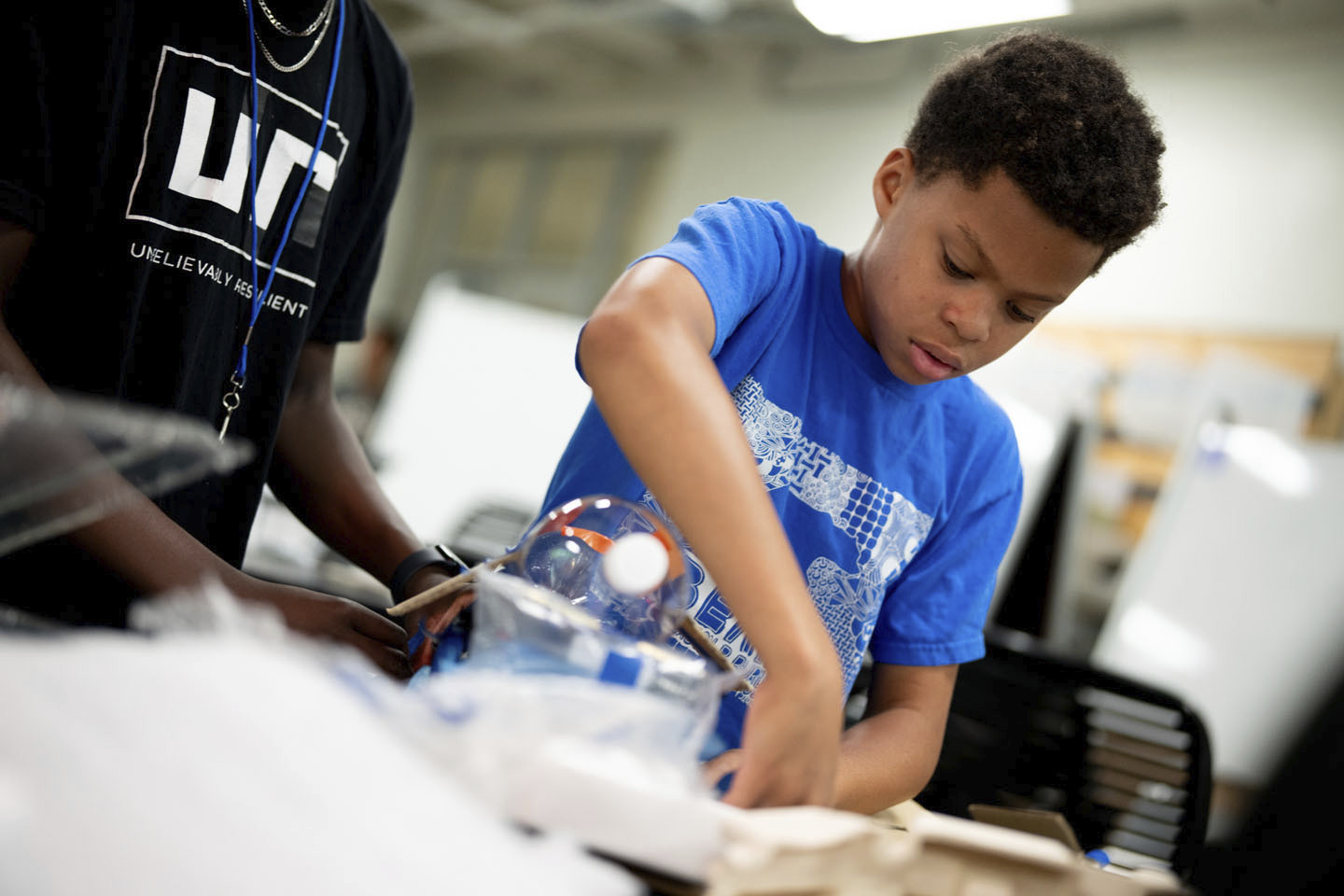
For help with the creation of assignments and outreach, Richards enlisted the fourth-year students in his engineering design course, as well three UVA Curry School of Education and Human Development students, who also evaluated the success of the various approaches. He credits alums Chris Schnittka, Jenn Cunningham and Josh LaBrie with “significant contributions to our early efforts.”
The team knew that even with offerings from companies like PASCO and K’Nex on the market, one thing was always missing. Someone experienced to help you along. UVA engineers in precollege classrooms provided role modeling and motivation for the younger students.

“We’ve always tried to do things those companies are not doing,” Richards said. “With the teaching kits, we always have an engineering component in it, and we always have preparation before the students actually get to do anything. So presumably they know what they're doing before they start, but they will have discovered new things afterward.”
He said he estimates more than 5,000 middle school students have been influenced by their ETK experiences. He said it’s unclear how many have gone on to become engineers, because those numbers aren’t tracked, but “my many UVA students of course have gone out into the world as engineers and educators.”
Schnittka, for example, who earned her master’s in mechanical engineering and her doctorate in science education at UVA, now co-directs Auburn University’s efforts to mold science education and related research.
The middle school outreach is just one of numerous efforts that Richards has been involved in to further engineering education. Another, an outreach to high school students called BLAST, sponsored by the Virginia Space Grant Consortium, was scheduled for the following week.
That program has drawn 80 or more high schoolers each summer for the past 10 years.
“I actually went to BLAST camp here at UVA when I was in between my freshman and sophomore years of high school,” said Alexis Blankenship, a rising third-year biomedical engineering student and Society of Women Engineers member who helped out at the Explore event. “That's the reason I wanted to go to UVA and the reason why I got interested in engineering.”

How To Make a Splash, by Not Making One
Richards raised his hands high in the air. It was time for the competition — err, official testing — to begin. In the past two decades, only one team has ever scored a perfect 500, meaning the vehicle cleared all obstacles and none of the 500 milliliters of water spilled.
“Underfunded Elves” got off to a strong start with 430 points. Other teams had similarly thought-provoking names, such as Sigmas, Casper Gang, Horrible and Timmy.
But it was the all-girls team, who came up with the ironic name “Puddle,” who spilled the least water and scored the most points, with 475.
“We used some cardboard to make our vehicle go fast, but put some foam in it so it wouldn't go too fast,” Puddle team member Kimberly Anderson said of their thought process. “Then we put a little bit of stuff around it, so everything wouldn't go everywhere.”
“And everybody contributed,” noted Shriya Perumal.
“It was basically a powerhouse,” Anderson concluded.
As the results were announced, none of the middle schoolers seemed to grouse. For his part, Beaver cheerfully iterated aloud what he thought he could do better in the future.
That’s how the minds of engineers work.
